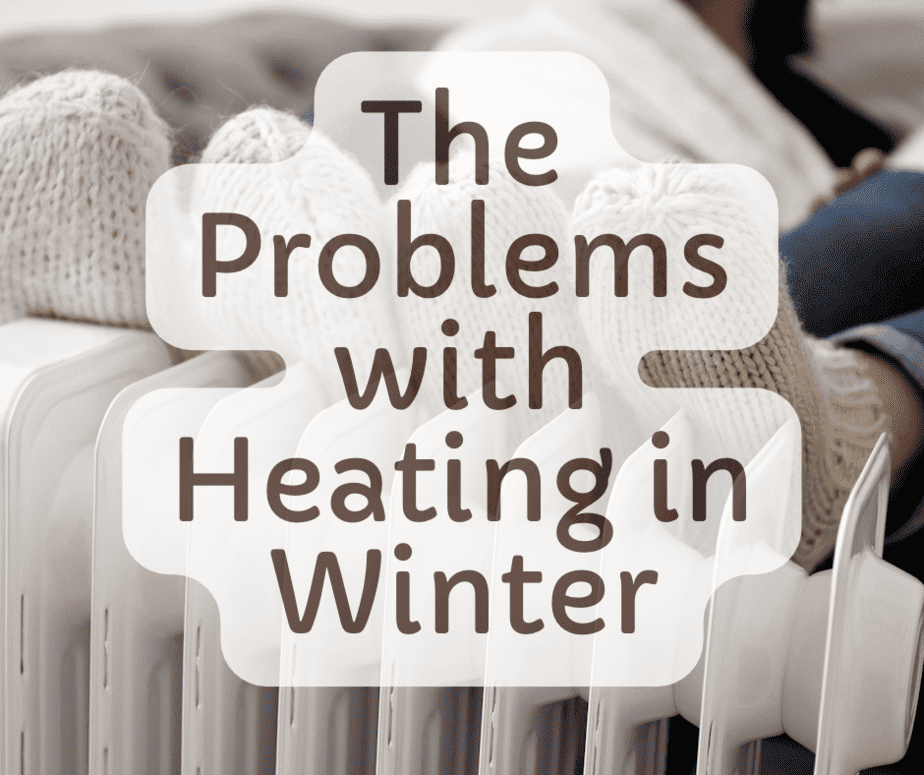
Heating in the winter comes with many serious issues that you may not think about or even notice. Some are minor and can be fixed easily, but others are potentially deadly. From losing some quality of sleep to risking your life with carbon monoxide, here are some of the worst problems you may face keeping your living space warm in colder temps from a guest author.
Poor Ventilation Causes Mold
It might seem normal to close all the doors and windows when it’s cold. This will help keep heat inside and cold out. However, your home needs good ventilation, or issues can pop up. One of the worst is black mold. Black mold happens when there isn’t adequate ventilation. In winter, we have less ventilation because we close the doors and windows. However, a ceiling fan upgrade, installing an outlet, or even opening the windows for around 10 minutes per day will help.
Heat in Winter Lowers Sleep Quality
Sleep experts advise that we sleep with a temperature lower than usual in the bedroom. This is because your body temperature fluctuates at night and can make you feel hotter. When you feel hotter, sleep is interrupted. While around 70% of us don’t get enough sleep, we can make it better. You may have the heating on during winter to stay warm. But open the bedroom window before bed to lower the ambient temperature. Thermostatic valves help control each radiator.
Wet and Dry Air Can Make Illnesses Worse
Balancing the moisture levels in your home can be tricky. Too much or too little moisture in the air causes issues. Dry air can cause itchiness and make skin conditions worse. On the other hand, wet air can cause breathing problems to become worse, such as COVID. A well-maintained HVAC system and a humidifier will control the moisture in the air of your home. When balanced properly, moisture control can also contribute to more efficient heating.
An Inefficient System Causes Issues
When it comes to heating, it’s all about efficiency. A less efficient system will cost more money because it will use more energy. As a result, you may have a cold home. However, you can easily see if your heating system is failing. Some of the top signs of a poor system include:
- Cold spots can form around your home from blocked vents and bad filters.
- Bangs and sounds can occur from the boiler and furnace if the blower motor dies.
- An incorrectly calibrated thermostat will cause poor heating across the home.
- Drafts and bad insulation make your heating system work much harder.
- Heating systems can become worn if you don’t learn to use them correctly.
Any one of these is a sign you need to call a professional. It could be a quick fix. But there’s also the chance you need a new and more efficient heating system installed. This isn’t a bad thing, though. It will cost some cash. But the cost will be offset by the bigger savings you will make,
The Weather Can Make it Harder
No matter how good your heating system is, it is no match for nature. You may have to endure one or two degrees lower than you would like because a boiler cannot reach the desired temperature of around 22°C when the temperature outside reaches -1°C. Leaving the heat on for the thermostat to try and reach this will only use up more and more energy. However, if your home is well-insulated and maintained, you should still be able to stay warm enough for winter.
Carbon Monoxide from Heating in Winter
One of the most concerning issues when it comes to winter and heating is carbon monoxide. CO is completely undetectable by humans and can be breathed in without even knowing it. There are countless tragic cases of this happening in homes. A broken down heating system can leak CO, and with enough amounts, can cause death within 2 hours. Boiler and furnace servicing will help detect failure issues early on, and a CO alarm is highly recommended.
Cracked Walls Can be an Issue
Buildings get cracks. That’s just a given. But they can become so bad that they make heating your home to a comfy level a little harder. Water gets into the cracks and expands when it freezes. This makes the crack larger and worse over time. Larger cracks allow heat to escape and cold air inside. These will reduce your home’s energy efficiency. Fortunately, all it really takes is some time to locate home cracks, a small amount of money, and DIY filler products.
Summary
Poor ventilation can cause heating problems in winter that contribute to mold. If your boiler or furnace doesn’t work well, it also becomes inefficient and costs more to run. But even something as small as a crack in the wall can lose heat and introduce a lot of cold air into your home.